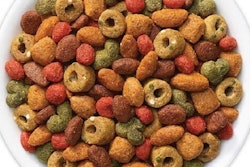While six in 10 global consumers believe significant changes in how food is produced and consumed are needed, according to National Geographic’s 2014 Greendex survey, only one in four consumers say they feel empowered to influence the way food is produced, with just four in 10 saying they have influence as consumers over what food is available to them. Obviously, there’s a disconnect—so much for consumers being able to vote with their wallets, huh? Does this much of a disconnect exist with pet food, too?
The Greendex survey is an international measure of “consumer progress toward environmentally sustainable consumption,” according to National Geographic, which has conducted the study five times now in partnership with GlobeScan. Tove Malmqvist, research manager for GlobeScan, recently reported the results on Greenbiz.com.
Interestingly, consumers in what are considered “developing” countries—such as Mexico, Brazil and South Africa—are more likely to think large or very large changes in how food is produced and consumed are needed (at 87%, 82% and 80%, respectively). On the other hand, in countries such as Japan, South Korea, Russia and the US, fewer than half of consumers surveyed believe large or very large changes are necessary.
In fact: ”The US ranks as the least sustainable in terms of the average consumer’s overall habits of all 18 countries surveyed for a variety of reasons,” Malmqvist reported. “A love of fast food and convenient food affects its environmental footprint, as this means more processed and packaged foods are consumed.” She added, though, that 82% of US consumers surveyed believe that buying locally produced foods helps local economies; and GlobeScan’s research shows consumers globally think it’s very important to know how and where their food is produced, although relatively few say they do. Yet another disconnect.
In another Greenbiz.com article, Bob Langert, who just retired as McDonald’s VP of sustainability (speaking of fast food), reported that the 2015 Dietary Guidelines Advisory Committee, which is responsible for drafting US federal nutrition guidelines, just released for public comment a technical report that includes a chapter on a “sustainable diet” that also addresses food security.
While we in the pet food industry don’t often (if ever) use the term “food security,” we should be paying attention to this issue. If experts from all sides and perspectives involved in the human food system worry that we will be able to feed the world’s growing population—projected to reach 9 billion people by 2050—the diets of our humanized pets should be cause for concern, too. There just won’t be enough sources of protein, not to mention other types of ingredients, to feed everyone, human or pet.
Langert’s comments about the new dietary guidelines report in some ways echo the National Geographic/GlobeScan survey findings: “The reality is this work is simply catching up to the consumer. The biggest trend we are witnessing in food over the past five to seven years is that consumers deeply care about where their food comes from, how it is sourced, what is in it and how it is processed. As a whole, the new foodie consumer wants to feel good about the food they eat. Good is defined not just by calories, but by its carbon footprint, too.”
Yet, are consumers really willing to pay more to eat sustainably? Or does that desire just apply to so-called foodies? And, as the GlobeScan data references, do people really understand where and how their food is produced?
When it comes to pet food, I think most consumers understand even less, not only about how it is produced but also what is best nutritionally for their pets. Otherwise, they would embrace the use of by-products in pet food for the high nutritional benefits, palatability and sustainability these perfectly safe and healthy ingredients provide.
So perhaps for pet food, the disconnect lies in consumers really understanding what it means when they say they want to feed their pets the same way they feed themselves and their human family members.



















